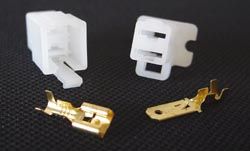Dean,
As pointed out in the video, you can use that tool for insulated connectors, but the insulation may suffer damage as a result.
Take your cheap do-it-all tool and put it in your tank bag along with a little baggie with terminals and splices in it. Those kind of repairs will certainly get you home. A test light is nice to have as well.
As pointed out in the video, you can use that tool for insulated connectors, but the insulation may suffer damage as a result.
Take your cheap do-it-all tool and put it in your tank bag along with a little baggie with terminals and splices in it. Those kind of repairs will certainly get you home. A test light is nice to have as well.

 (Sold back to Maximan)
(Sold back to Maximan)




Comment